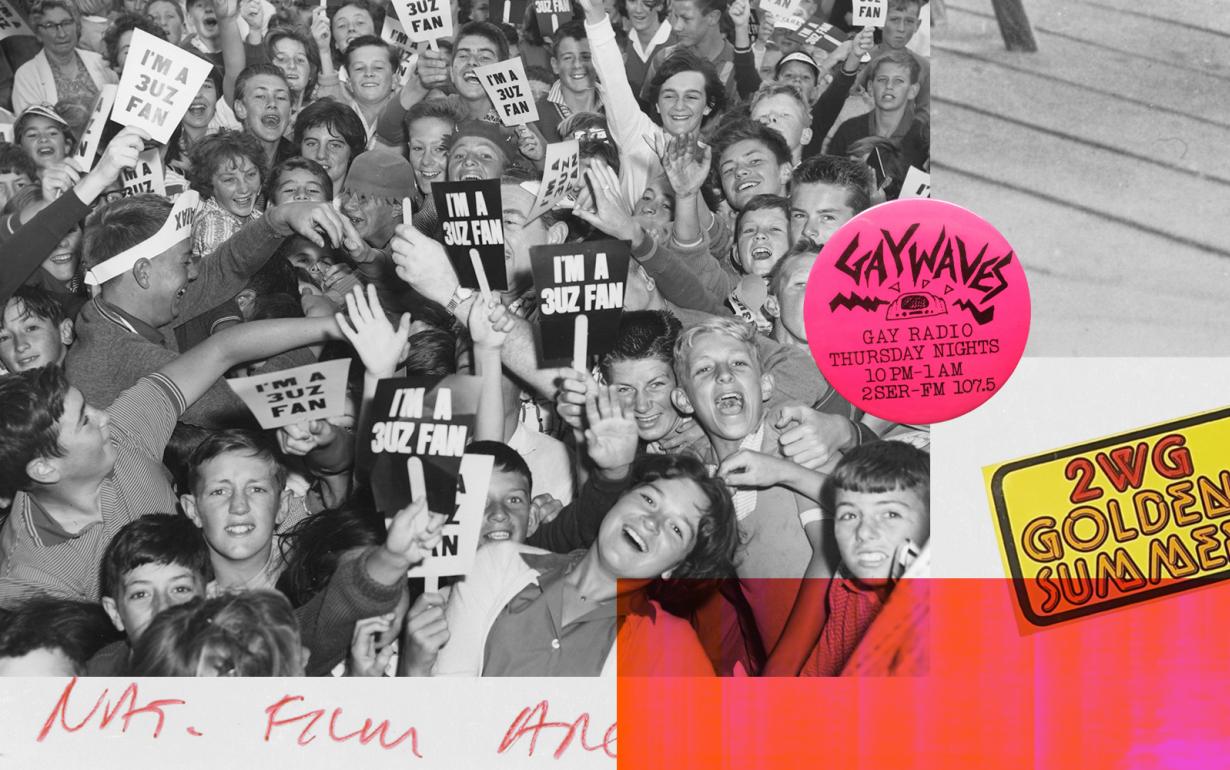- The National Film and Sound Archive of Australia’s major digital exhibition continues
- Marks the emergence of multiculturalism and diversity as a powerful force in Australian radio
- First look at the NFSA’s new podcast Who Listens to the Radio?
All the Voices, the new chapter from the NFSA’s Radio 100 digital exhibition, celebrates the emergence of different communities on Australian radio from the 1970s onwards. It launches on World Radio Day, the UNESCO-supported day celebrating the remarkable global achievements of the medium.
New local and national radio stations elevated voices previously unheard on air – women, young people, prisoners, First Nations peoples, LGBTQIA+ communities and the linguistically diverse.
In 1972, only six languages were broadcast in Australia due to fears about the potential for subversive material to spread on air. All the Voices charts the birth of SBS Radio – featured here in 25 Years of SBS Radio – launched as a trial by the Whitlam Government to promote Medibank (now Medicare) and now broadcasting in 68 languages as SBS Audio.
All the Voices explores the rise of community radio such as groundbreaking Melbourne station Triple R, and investigates the effects of the distribution of the FM licences which transformed the media landscape of hundreds of Australian towns and cities and enabled radio stations, for the first time, to target specific audiences.
Community radio fed the growth of Aboriginal and Torres Strait Islander-led stations and their ability to broadcast in language to remote communities and to advocate for First Nations issues. It also communicated directly to and on behalf of maligned communities, evidenced in 3CR’s unique prison show Beyond the Bars.
Meanwhile, the presence of women on air has been amplified on national, local and community networks in the decades since the 1970s, but this clip from Brisbane community station 4ZZZ invites reflection on how much progress has been made.
For LGBTQIA+ listeners, community radio has been a vital point of connection, information and celebration, evidenced by Joy 94.9’s coverage of the 2018 Sydney Mardi Gras Parade. Gaywaves on Sydney station 2SER went to air in 1979 as Sydney’s first gay and lesbian radio program, at a time when mainstream media rarely reported on LGBTQIA+ issues positively.
‘The people, music and ideas we celebrate in All the Voices are a testament to radio as a uniting force for so many communities around Australia,’ said NFSA curator Crispian Winsor.
The launch of All the Voices builds on the NFSA’s November release of New Waves – the first instalment in the Radio 100 digital exhibition, on December’s chapter Golden Days, which explored radio’s transition to a vital inclusion in every family home, and on the January launch of Youthquake, which charted the rise of the DJ, the transistor and talkback radio.
Coming up in Radio 100:
MAR 2024 |
Chapter 5 Let’s Get Digital |
1990s-onwards | Disruption, tech convergence and radio’s rebirth as audio culture |
MAR
|
NFSA Podcast – Who Listens to the Radio? | Listen to the trailer | A six-part podcast celebrating 100 years of audio culture. Stay tuned for the stories, people, songs and tech that defined radio’s first century – with some very special guests. |
Audience CTAs
- Radio 100 is available at nfsa.gov.au/radio100
- Audiences are invited to share their radio memories at nfsa.gov.au/RadioMemories, such as hearing major news, remembering a particular station or host, responding to a jingle, a specific program, or a song that haunted the airwaves for a summer.
Media enquiries and interview requests:
Louise Alley | Communications Manager | 0422 348 652 | [email protected]
ABOUT THE NATIONAL FILM AND SOUND ARCHIVE OF AUSTRALIA
The National Film and Sound Archive of Australia is the national audiovisual cultural institution. From the earliest recordings of the 1890s to the latest games and immersive digital productions, the collection comprises video and audio recordings, and contextual materials such as costumes, scripts, props, photographs and promotional materials. It ranges from items inducted into the UNESCO Memory of the World register to sporting matches, game shows and advertising jingles. Originally known as the National Historical Film and Speaking Record Library and operating under the auspices of the Commonwealth National Library, the collection dates back to 1935, making it one of the first audiovisual archives in the world. The NFSA became an independent cultural organisation in 1984. As well as preserving these items for future generations, NFSA curators continue to add to the collection, ensuring it provides an unbroken record of life in Australia, and of Australian creativity.

